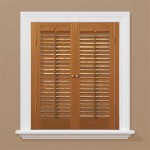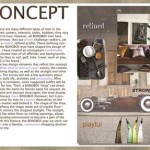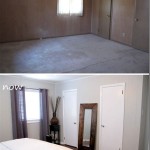Home Office Interior Design Ideas: Pictures and Practical Advice
The modern work landscape increasingly embraces remote work, necessitating a dedicated and functional home office. A well-designed home office enhances productivity, fosters creativity, and promotes a sense of well-being. This article explores various home office interior design ideas, providing visual inspiration and practical advice for creating an optimal workspace.
Before embarking on any design project, a thorough assessment of individual needs and constraints is crucial. Factors to consider include available space, budget limitations, technological requirements, and personal work style. This foundational analysis will guide the selection of appropriate design elements and ensure that the final result aligns with practical needs.
Maximizing Space and Layout
Space is often a limiting factor in home office design. Effective space utilization is paramount, especially in smaller homes or apartments. Multifunctional furniture should be prioritized, such as desks with built-in storage, wall-mounted shelves, and foldable tables. Vertical space should be exploited through shelving units and tall cabinets, providing ample storage without consuming valuable floor area.
The layout of the home office should promote ergonomic comfort and minimize distractions. The desk should be positioned to take advantage of natural light, avoiding glare on computer screens. The chair should be ergonomically designed to support proper posture and reduce strain during prolonged periods of sitting. Adequate space should be allocated for movement and stretching to prevent fatigue.
Zoning the office space can further enhance functionality. Separate areas can be designated for different tasks, such as a dedicated work area, a meeting zone, and a relaxation corner. Visual dividers, such as bookshelves or screens, can be used to delineate these zones without completely isolating them. This zoning strategy helps to maintain focus and organization.
Consider the flow of movement within the office. Ensure that there are clear pathways between different areas, minimizing obstacles and clutter. This contributes to a sense of spaciousness and allows for efficient navigation. Cable management is also critical for maintaining a tidy and organized workspace. Cable ties, conduits, and grommets can be used to conceal wires and prevent tangling.
Color Palette and Lighting Considerations
The color palette significantly influences the mood and atmosphere of the home office. Neutral colors, such as white, gray, and beige, are generally preferred as they create a calming and uncluttered environment. These colors also provide a versatile backdrop for incorporating accent colors and personal touches. Light blue and green tones can promote relaxation and reduce stress, while warmer colors, such as yellow and orange, can stimulate creativity and energy.
Lighting is a crucial element of home office design, impacting both functionality and aesthetics. Natural light should be maximized whenever possible, as it enhances mood and reduces eye strain. Artificial lighting should supplement natural light, providing adequate illumination for tasks performed during the day and evening. Layered lighting is recommended, incorporating ambient, task, and accent lighting.
Ambient lighting provides overall illumination to the room, typically achieved through overhead fixtures or recessed lighting. Task lighting focuses on specific work areas, such as desk lamps or under-cabinet lighting. Accent lighting highlights particular features or artwork, adding visual interest and depth to the space. Adjustable lighting fixtures allow for customization based on individual needs and preferences. Avoid harsh fluorescent lighting, which can cause eye strain and headaches. Opt for LED lighting with adjustable color temperatures to create a comfortable and productive work environment.
The placement of lighting fixtures should be carefully considered to minimize glare and shadows. Position desk lamps to avoid direct light shining into the eyes. Utilize dimmer switches to adjust the intensity of the lighting based on the time of day and the task being performed. Natural light can be diffused through curtains or blinds to reduce glare and maintain a comfortable level of brightness.
Personalization and Ergonomic Design
Personalization is essential for creating a home office that reflects individual style and preferences. Incorporating personal touches, such as artwork, photographs, and decorative objects, can enhance the aesthetic appeal and create a more inviting workspace. However, it is crucial to avoid excessive clutter, which can be distracting and counterproductive.
Ergonomics plays a vital role in promoting comfort and preventing musculoskeletal disorders. An ergonomically designed home office reduces strain on the body and promotes proper posture, leading to increased productivity and reduced fatigue. Invest in an ergonomic chair with adjustable height, lumbar support, and armrests. The monitor should be positioned at eye level to prevent neck strain. A keyboard and mouse should be placed within easy reach to minimize reaching and stretching.
Consider a standing desk to alternate between sitting and standing throughout the day. Standing desks promote circulation, reduce back pain, and increase energy levels. Implement regular breaks to stretch and move around, preventing stiffness and fatigue. Use a footrest to support your feet and maintain proper posture. A wrist rest can also reduce strain on the wrists during prolonged typing.
Introduce plants into the home office to improve air quality and create a more calming environment. Plants can also reduce stress and enhance creativity. Choose low-maintenance plants that thrive in indoor environments. Consider incorporating sound-dampening materials, such as acoustic panels or thick rugs, to reduce noise levels and create a more focused workspace. Noise-canceling headphones can also be helpful for blocking out distractions.
In addition to the aforementioned points, selecting the right technology and accessories is crucial for a functional home office. Investing in a reliable computer, printer, and scanner can streamline workflow. A high-speed internet connection is essential for online meetings and collaborations. Consider a dedicated phone line for business calls. Organize cables and wires to prevent clutter and tripping hazards. A whiteboard or bulletin board can be helpful for brainstorming and organizing tasks.
Ultimately, the design of a home office should be tailored to individual needs and preferences. Experiment with different layouts, color palettes, and furniture options to create a space that promotes productivity, creativity, and well-being. Regular maintenance and organization are essential for maintaining a functional and aesthetically pleasing home office.
Remember to consider the specific requirements of the work being performed. Architects and designers might need large drawing tables and specialized lighting. Writers and editors may prioritize a quiet and distraction-free environment. Programmers may require multiple monitors and advanced ergonomic setups. Tailoring the design to the specific needs of the job is crucial for maximizing productivity.
Furthermore, consider the long-term usability of the home office. Choose durable and high-quality materials that will withstand daily wear and tear. Consider the potential for future growth and expansion, ensuring that the space can accommodate changing technological needs and work requirements. A well-designed home office is an investment that will pay dividends in terms of increased productivity, reduced stress, and improved overall well-being.
In conclusion, creating a functional and aesthetically pleasing home office involves careful planning and consideration of various design elements. By maximizing space, optimizing lighting, personalizing the environment, and prioritizing ergonomics, individuals can create a workspace that promotes productivity, creativity, and overall well-being. The key is to tailor the design to individual needs and preferences, creating a space that is both functional and inspiring.

30 Home Office Design Ideas

Home Office Design Interior

Luxury Home Office Design
8 Amazing Interior Design Ideas For Small Office At Home Beautiful Homes

Home Office Ideas Interior Design Decor And Layout Tips Decorilla

Mastering A Home Office Design

Home Office Ideas Interior Design Decor And Layout Tips Decorilla

Top 5 Home Office Wood Tailors Club Riveting Craftsmanship

30 Home Office Ideas 2024 Interior Designer Tracy Svendsen

Five Simple Design Ideas To Help A Home Office Shine Lita Dirks Co
Related Posts








